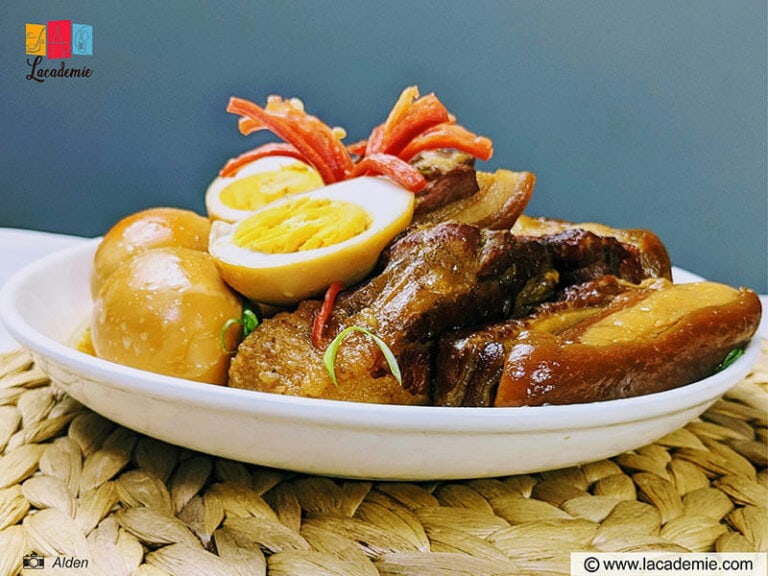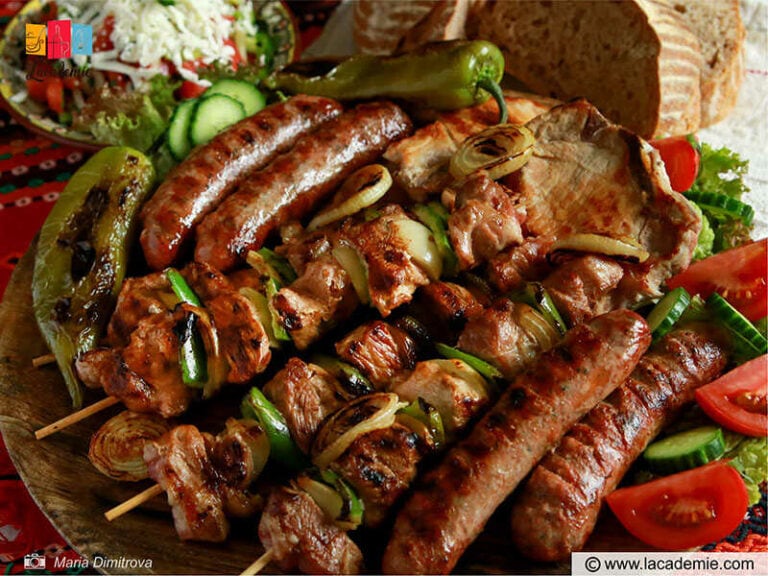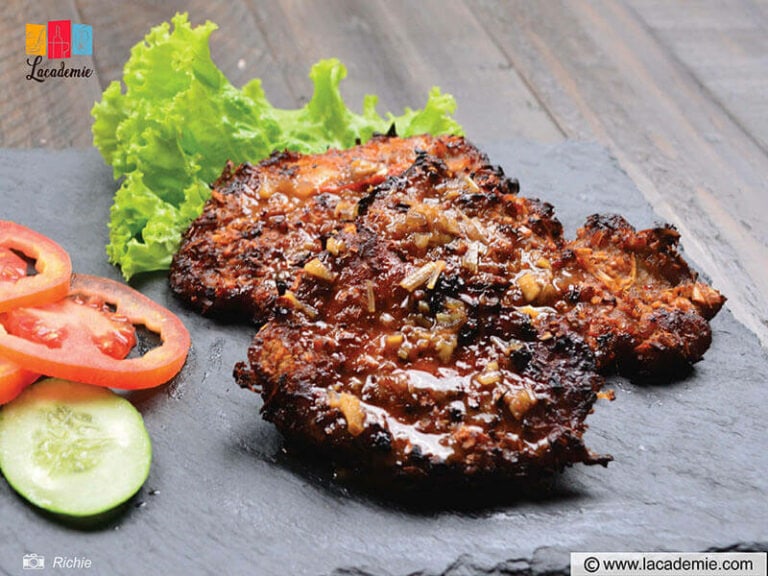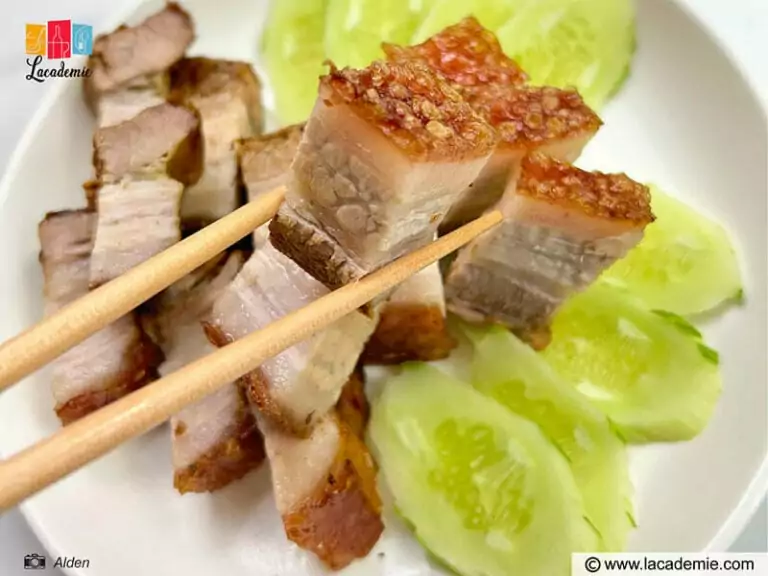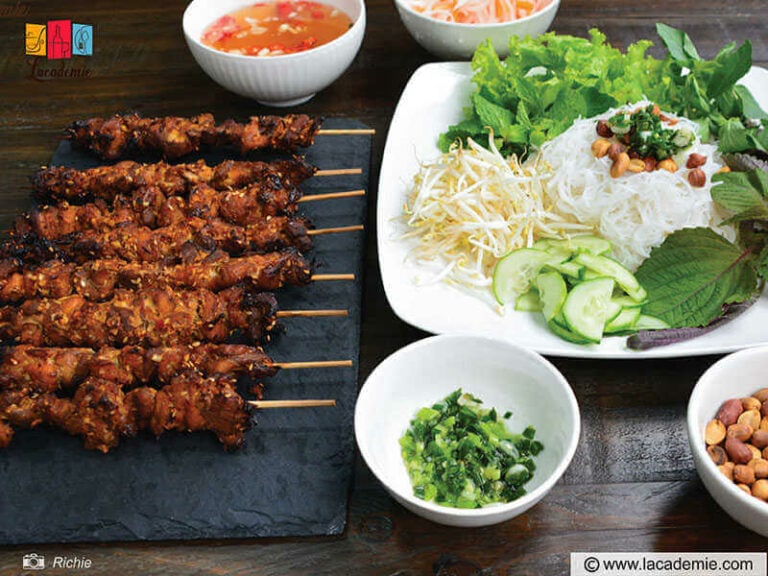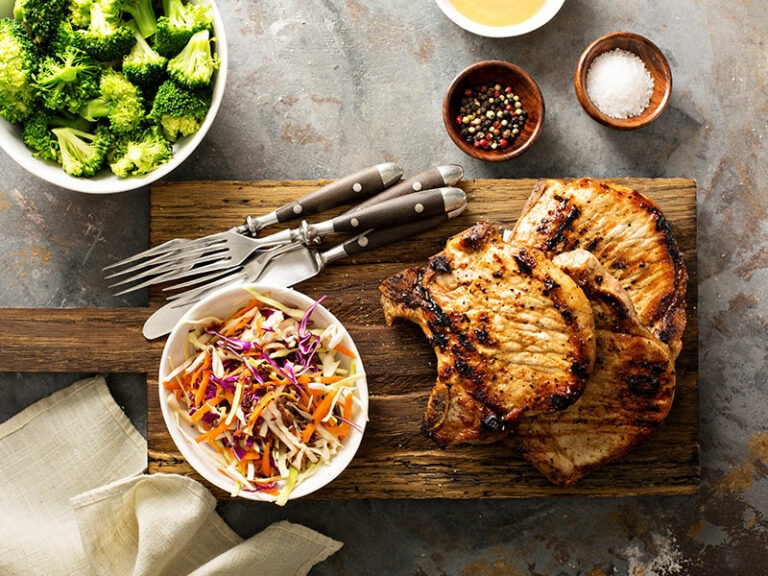Pork shoulder vs. pork butt – if these two terms have confused you, you are not alone. Seasoned homemakers even sometimes confuse these two cuts with each other. Discover the differences between pork shoulder and pork butt with me in the article below.
I created this post to help strengthen your understanding and appreciation of these two low-cost cuts of meat. As you read on, you will uncover more information about the qualities and suggested cooking techniques, not to mention the delicious recipes for each cut.
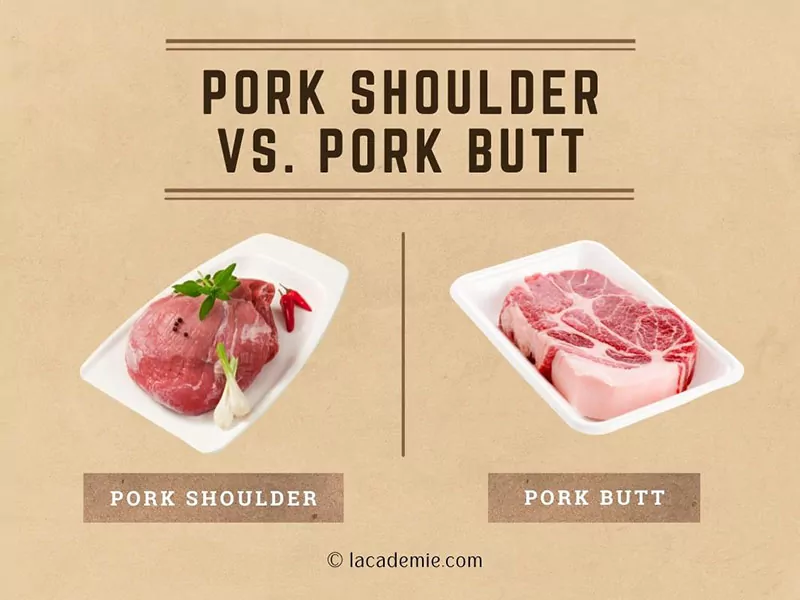
Pork Shoulder and Pork Butt – Where Do They Come From?
Both pork butt and pork shoulder are located in the shoulder, the meatiest part close to the pig spine. Therefore, people often confuse them with each other.
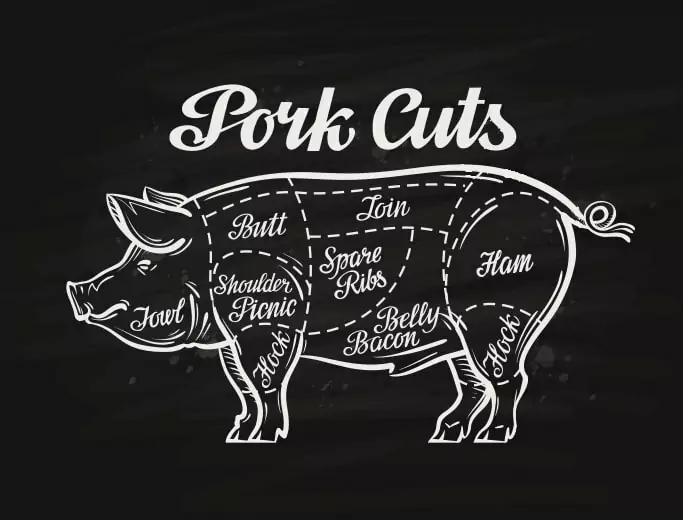
Pork Shoulder
Pork shoulder, also known as pork picnic shoulder, is the cut of meat above the front leg, between the shoulder blades, and below the pork butt on the pig. The piece of meat is one of the primal cuts of the pork and often considered fatter than several other types of pork.
Usually, butchers sell pork shoulder with the skin and an attaching layer of fat at stores. Another part of pork closely related to pork shoulder is pork loin.
Along with pork shoulder, pork loin is one of the four primal cuts of pork. There are some similarities but more differences between pork loin and pork shoulder.
This cut of pork comes from the area between the shoulder and the back legs. Pork loin is a leaner cut of meat, containing less fat than pork shoulder.
Pork Butt
Another name for the pork butt is Boston butt. It is the cut of meat located on the shoulder of the pig, behind the head and neck of the animal but above the pork shoulder. With this position, the muscles are not heavily-worked, and the cut will be less stiff.
Pork butt is one of the subprimal cuts of pork that come from the shoulder akin to pork shoulder (shoulder picnic). For your information, a subprimal cut is the smaller piece of meat obtained from the primal cuts of an animal.
Do you want to know more about different cuts of pork? Find out here!
Let’s Gain A Deeper Insight Into Pork Shoulder
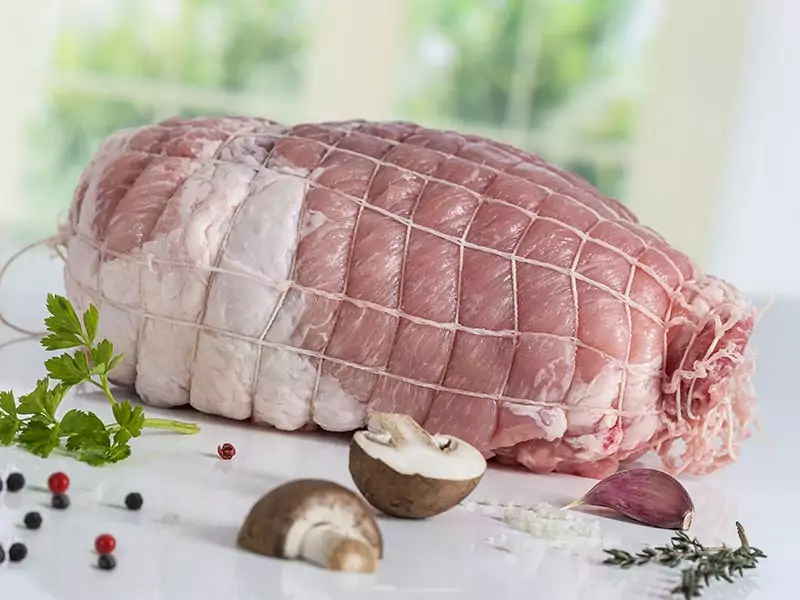
Pork shoulder goes by a few other names at the grocery store, such as shoulder meat, picnic shoulder, pork shoulder picnic, and picnic ham. It is an inexpensive, heavily marbled cut of pork coming from the upper portion of the front legs of a pig and near the shoulder arm.
Interestingly, it’s called picnic ham since the pork shoulder is a good and affordable substitute for a regular ham (a specific cut from the hind legs). Picnic ham is suitable for informal dinners, casual dining, and picnic rather than formal parties like Easter, Christmas Eve, or Thanksgiving.
The pork shoulder has a large bone in the center, and in contrast to the pork butt, it has more working muscles (for walking), so the meat will be tougher and denser. This 5-to-10 pound piece of pork is often sold bone-in, skin-on, or boneless.
With the bone inside and skin on the outside, pork shoulder requires low and slow cooking (or roasting) methods to tenderize the meat and make the skin enjoyably crispy.
Pork Is Pork, But What Is Pork Butt Exactly?
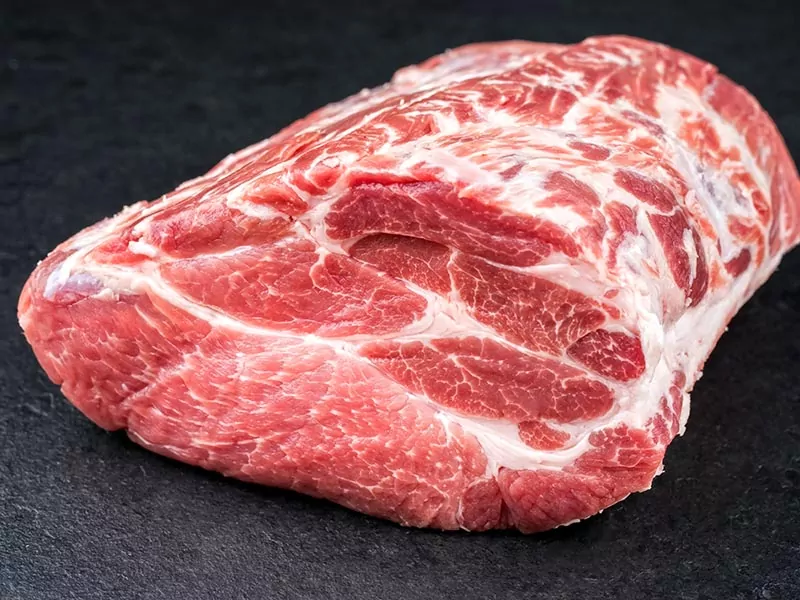
Another name for pork butt that may sound more familiar to you is Boston butt. Here are some breakdowns of this cut of meat.
No doubt, some people may confuse pork shoulder with pork butt and misleadingly name them. Although they come from the same location and their names are interchangeable in uses, the two are in different cuts of pork in the shoulder area.
Contrary to its name, pork butt is not anywhere near the rear end or backside of the pig. On the other hand, pork butt is a fatty and well-marbled cut that lies near the shoulder blade and behind the neck and head.
On top of that, pork butt has less bone than pork shoulder. Its weight often ranges from 5 to 10 pounds at the grocery store. Also, the muscles in the pork butt area don’t work as much as in the pork shoulder, so the meat will also be less firm.
There are some theories about the name “butt”. One suggests that it stems from an old English word that means “the widest part.” And of all the parts of pork meat, the widest part is the shoulder.
Or, to put it in another way, the word butt means “the thick end of something” (for example, a rifle butt), and the pork butt is the thickest part of the pig’s shoulder.
About the Boston part, some people believe that the name was because Bostonian butchers had unique ways to prepare it.
Check out some explanations for the name Boston butt here!
Pork Shoulder vs. Pork Butt – A Side-to-Side Comparison
I have walked you through pork shoulder and pork butt breakdowns. However, I don’t think it’s enough for you to imagine the differences. What is better than a side-to-side comparison between the two, right? Now, look at it carefully.
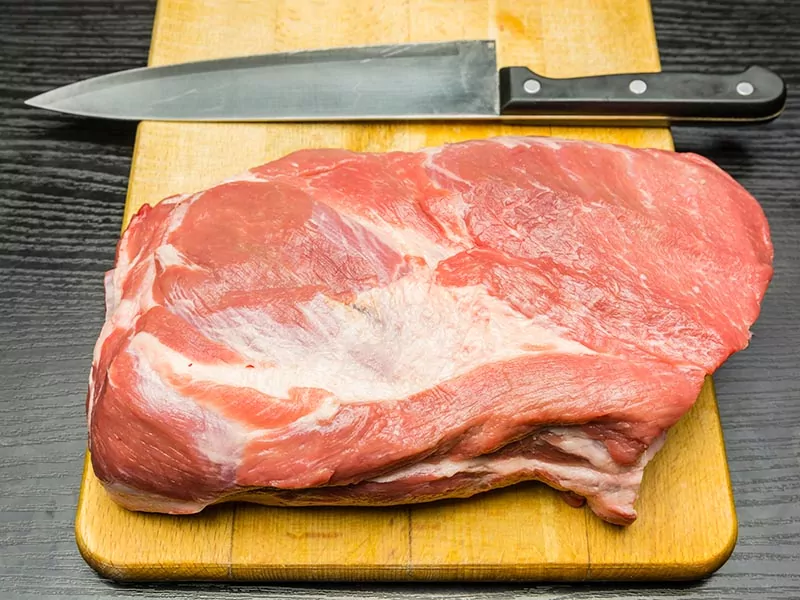
Nutrition Facts
Here are some nutrition facts about pork shoulder and pork butt. Can you spot the differences right away?
As you can see in the table above, the nutritional parameters of pork shoulder and pork butt are not much different. The biggest differences between pork shoulder and pork butt lie in the amount of fat: 14,6 grams (1) and 19,2 grams (2) per 100 grams of meat respectively.
Because located in the hard-working muscle part, pork shoulder contains less fat than pork butt, resulting in having fewer calories.
On the other hand, both pork butt and pork shoulder contain unhealthy saturated fat that leads to high blood cholesterol levels and poses heart disease and stroke risks. A ratio between meat and fat at 80/20 or 70/20 makes pork butt perfect for sausage making and meat grinding.
Both cuts of meat are rich in vitamins B1 and Niacin. If taken at the correct dose, vitamin B1 can help boost your metabolism, prevent nerve damage, and keep your heart healthy.
Niacin (vitamin B3) helps reduce triglycerides and bad cholesterol (LDL) as well as increase good cholesterol (HDL).
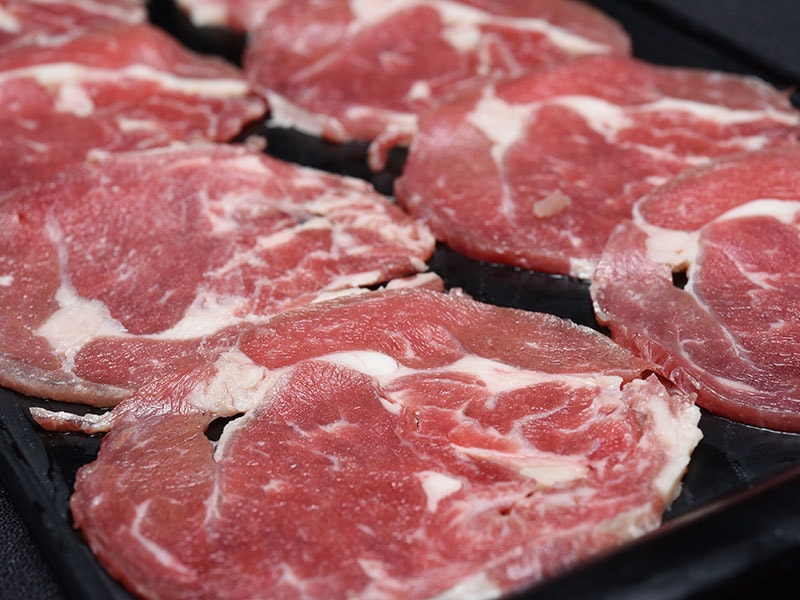
Costs
Even though prices can vary by region, pork shoulder and pork butt are among the lowest-priced cuts of pork because they are less tender than other parts and require more work to cook.
Depending on the area, or the grocery store and markets, one may be more expensive than the other, but the price of these two cuts of pork is not usually significantly different.
The price of pork cuts will be due to weight (regardless of having the skin on or not) and whether they are bone-in or boneless. Generally, pork shoulder is normally sold along with bones, so it is cheaper than pork butt.
Meanwhile, butchers tend to sell pork butts in larger pieces, so understandably it will cost more.
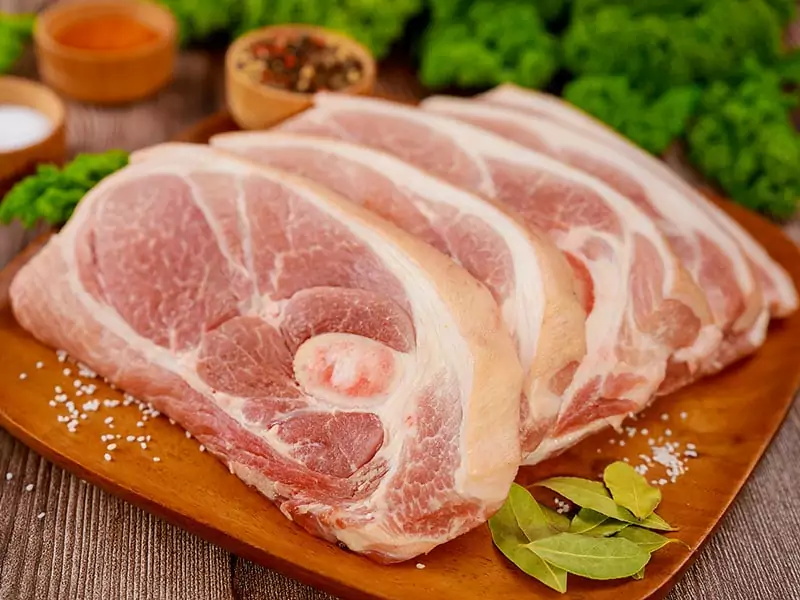
The Shape of Cut
I can say that it’s hard to distinguish pork shoulder and pork butt at first glance. The easier way is to ask the butchers to do that for you. Nevertheless, I will give you some hints so that the next time you stop by the grocery store, you can choose your favorite cut of meat.
Pork Shoulder
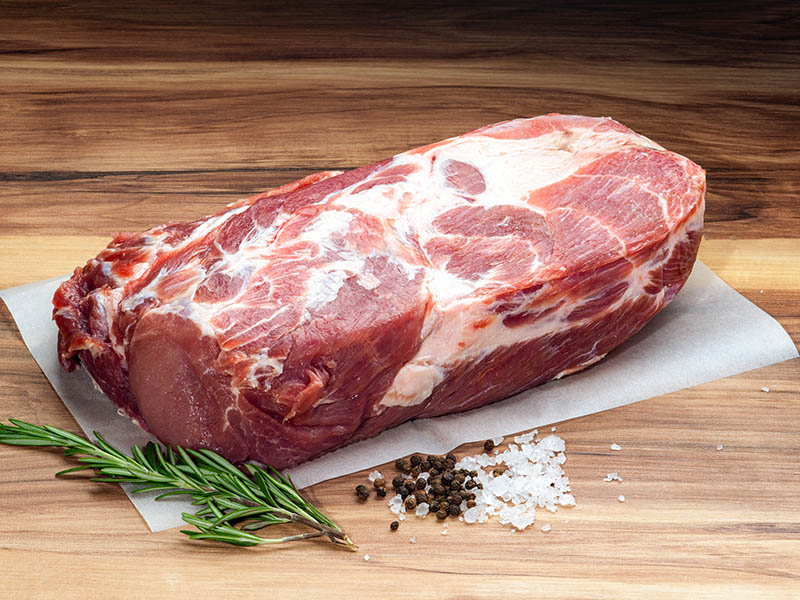
Pork shoulder is usually cut into a tapered, triangular shape. This primal cut always has a fat cap on one side, and butchers often leave the fat cap on when they sell the pork.
Butchers also leave the skin on when they cut the meat in a triangle shape. Accordingly, this cut of meat will come in a rectangular without any skin or bone.
If you ask for a pork shoulder without bones, it will probably come in the netting to hold it together. Basically, boneless pork should be sold with netting around it to remain in shape once butchers remove the bones.
Generally speaking, with large cuts of meat, I advise you to leave the netting on when cooking if you want your pork roast to retain a neat shape for your guests. However, it is optional, so feel free to remove or discard the strings.
Learn how to cut pork shoulder with this master butcher!
Pork Butt
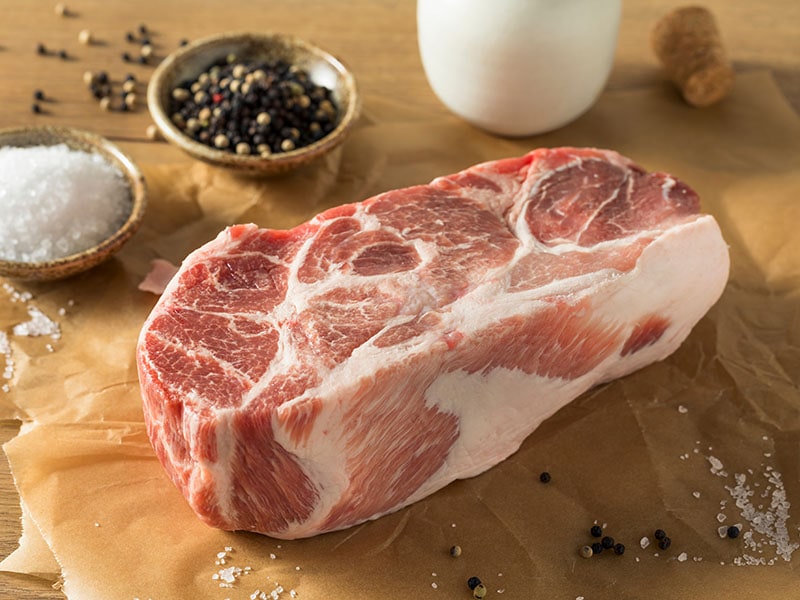
At stores, butchers often cut pork butt into a more uniformly rectangular (or, occasionally, oval) shape. This cut of meat is sold either bone-in or with the bones removed. A large piece of pork butt can weigh up to 8 pounds with the bones.
Nevertheless, some people can have the skin removed and sell pork butt in smaller chunks. You can ask butchers to slice the meat into pork steaks for grills or have it shaved thin for stir-pan.
As noted above, markets often remove the skin of the pork butt because it already contains a lot of fat. The fat cap is still intact and usually on the side of the cut.
Uses And Cooking Methods
Both pork shoulder and pork butt are excellent candidates for barbecuing. You just can’t resist their perfect clean meat-to-fat radio.
Pork Shoulder Is Famous With Its Crisp, Delicious Skin
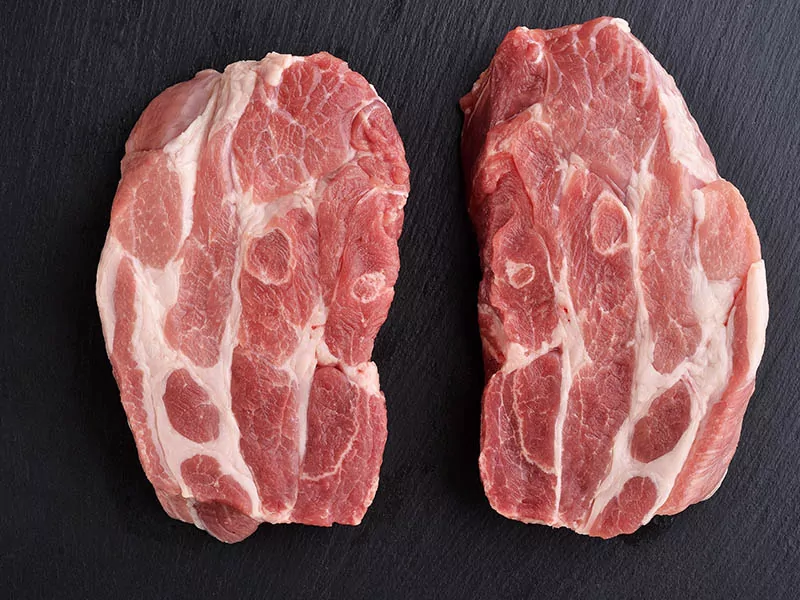
Everyone who works in the culinary world knows that pork shoulder has various cooking methods. Pork shoulder is firmer than its brother pork butt, so it is a good choice of cut for sliced or shredded pork.
The meat texture will be more firm. Besides, the fat content is enough to please the most fastidious diners.Experts recommend low and slow cooking because the collagen within the meat needs time to break down into gelatin.
Alternatively, you can cook pork shoulder by grilling, stewing, and braising. Especially, pork shoulder is the cut of choice when you suddenly crave something roasted. It’s also a good idea to smoke pork shoulder at 225 F for the right duration if you want to enjoy tender pork.
Since people often sell pork shoulder with the skin attached, you can remove it. But you can also leave it on and turn up the heat near the end of cooking to crisp it up. Consequently, you can add an outer layer of crackling on top. Slice the meat when you’re done cooking.
Pork Butt Is A Gift For The BBQ World
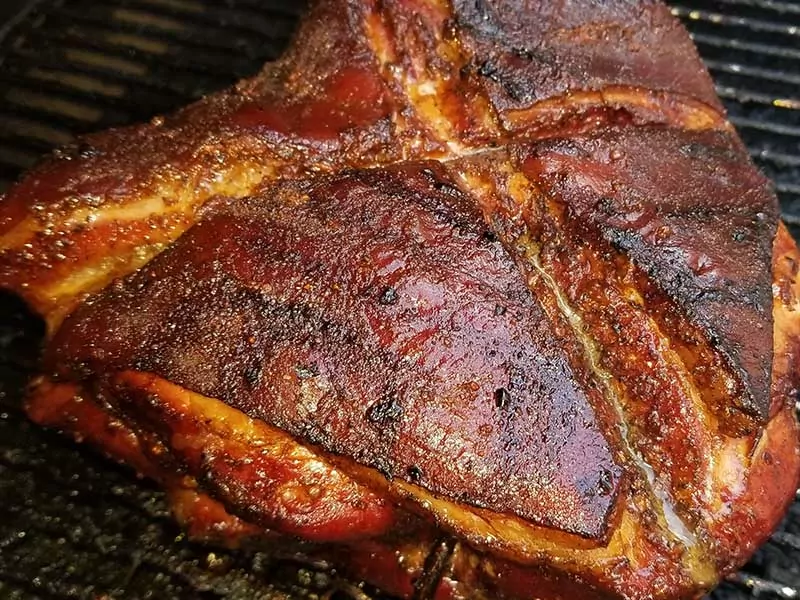
Pork butt is usually more tender than pork shoulder because it is a cut with softer and more moist muscles and contains more fat marbling. That’s why it is versatile enough to serve in many dishes.
The high-fat content makes pork butt more tender and juicier rather than dry and sinewy. What’s more, this heavily marbled cut is rich in connective tissues, even more than pork shoulder is, so the best way to prepare the pork is low and slow cooking; if not, it would be too tough to eat.
As you might expect, this cut of choice is well-loved in the traditional barbecue world. Hence, you can look at smoking, stewing, braising, or roasting to serve pork butt.
This primer cut is also great for fall-apart pulled pork, Mexican-style carnita dishes, or roast pork sandwiches. When choosing the right side dishes to go with pulled pork, you will improve its flavor even more. If you have to choose between pork picnic and pork butt in those recipes, I strongly recommend you to pick the latter.
Here Comes The Big Deal – Food Safety
It’s time to talk about serious business here. Regarding food safety, you have to pay extra attention because it will greatly affect your health.
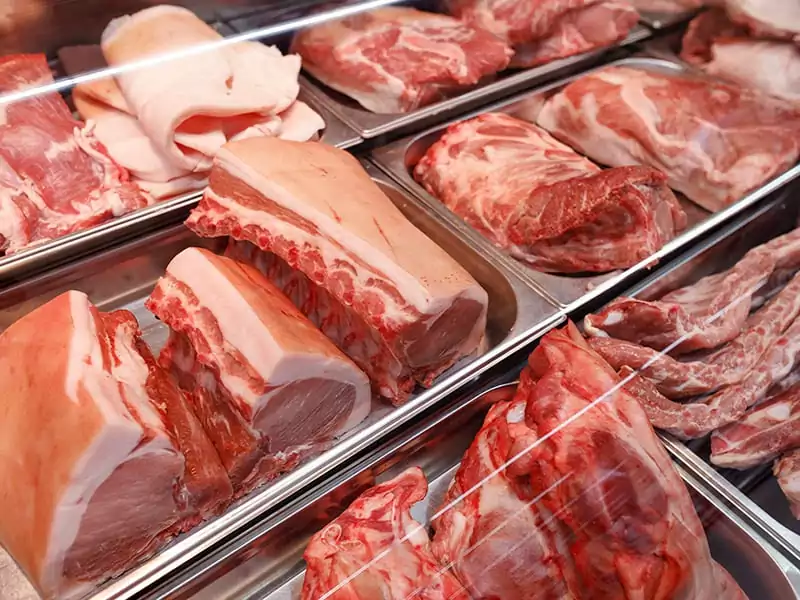
Fresh Meat is The Best Meat
When selecting pork, you have to take notice of a few things, such as the color, the amount of fat, and the firmness of the meat. Of course, the best color is bright and rosy red, while brown or gray pork may be old or spoiled. (3)
Remember to check the temperature of the pork when you buy it at the grocery store or supermarkets. All raw meat must be refrigerated when purchased. Plus, you should pick up the pork after buying all the other items on the grocery list.
Avoid cross-contamination by keeping raw pork away from other food items. Make sure to wash all the kitchen utensils with hot soapy water after you finish preparing the raw meat.
Pay Attention to The Dates On The Packages
Product dating often uses “sell-by” or “use-by” dates. However, federal regulations don’t usually require exact product dating on other items such as meat. (4)
A “sell-by” date refers to the recommended time to sell the product at stores. Meanwhile, a “use-by” date is the last date recommended to use the product. After the “use-by” period, your pork might start showing signs of going bad.
Nevertheless, some butchers still voluntarily label raw pork dates, which is the most important date regarding food safety. The “sell-by” date for frozen products like pork is within three to five days of purchase.
Pork Inspection and Grading
While inspection is mandatory and grading for quality voluntarily varies by the stores, the “Passed and Inspected by USDA” seal is proof of food safety and good animal care. USDA pork grades fall into two categories that are “Acceptable” and “Utility.”
You can find fresh pork of “Acceptable” quality sold at stores and supermarkets. This meat meets the requirements for the portion of lean meat to fat and bone.
Simultaneously, pork with the “Utility” grade is only used in processed products and is for sale at supermarkets.
Where to Buy Pork and Things to Know About Storage
Take out your notes and write down a thing or two about where to buy pork and meat storage. You don’t want to have your pork spoiled at the moment you remove it from the fridge, do you?
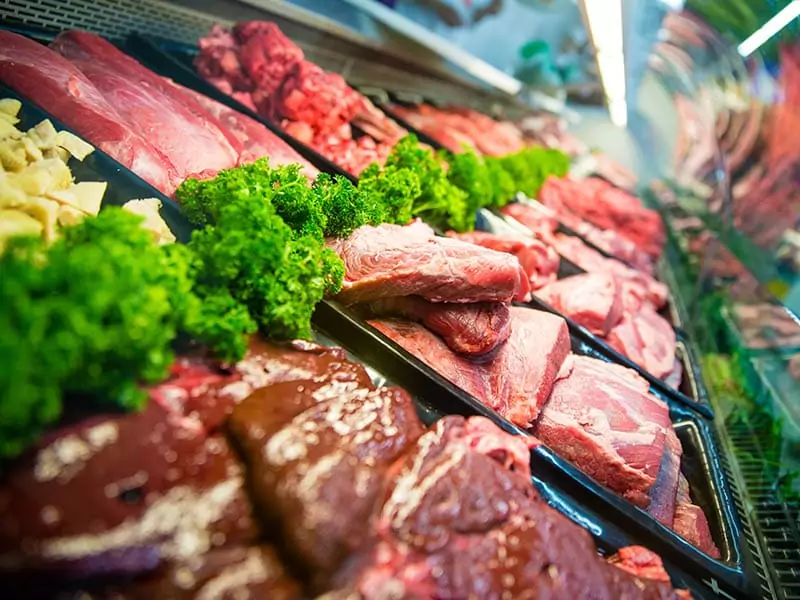
First Thing First, Where Can You Buy Pork?
It is super easy to find pork at any grocery store. I’m sure that you can buy a nice pork shoulder or pork butt at your local stores. Bear in mind the tips I mentioned earlier, and you will be fine.
If you are too busy and don’t feel like going to the stores, you can buy pork online or have it pre-ordered at professional family butchers nearby and get them delivered to your door.
As is, you will be more passive in selecting meat and entrust sellers with complete authority to choose a perfect piece of pork for you. I can recommend some reputable sites to order pork online such as Great British Meat if you are in the UK or Porter and York in the US.
How To Store A Fresh Cut of Pork?
It’s not every day that you buy a cut of fresh meat and process it right away, so continue reading to know how to preserve your pork.
After purchasing and getting home, you must put the fresh pork in the refrigerator or freezer immediately. Keep the pork at 40°F for storage. Be sure to never leave raw meat for too long at room temperature.
If you don’t intend to cook the pork within four days of purchase, the best thing to do is to freeze it. You can use foil or freezer bags to wrap the meat before freezing. Remember to press the air out of the package before placing it in the freezer. You can do the same with cooked pork.
Pork is at its peak of quality within four days of purchase. After it passes the “use-by” dates, you better not eat, cook, or freeze the pork. Even though you have preserved the meat correctly, and it may still look and smell the same, expired pork can pose some health risks.
Add These Pork Shoulder Recipes To Your Menu Now
Whatever dishes you plan to make, the first thing to remember is to choose a perfect cut of pork shoulder. As I said earlier, you can make various dishes with pork shoulder.
Crispy Pork Carnitas
First, I must talk about the recipe for crispy pork shoulder. When it comes to pork shoulder, “crispy” is a mesmerizing word. This dish has quite simple ingredients and can be made with the Dutch oven or your slow cooker.
Besides pork shoulder, the rest of the ingredients are easy to find and affordable such as orange juice, lemon juice, and chicken broth. One of the tricks here is to sear the pork before braising.
Crispy Skin Slow Roasted Pork Shoulder
Pork shoulder is great for keto since it is low in fat and affordable. With this recipe, you should cook it overnight to save time. Anyway, with low and slow cooking, you cannot rush time.
You can use either pork shoulder or pork butt to achieve an excellent result. Yet, I still prefer pork shoulder over the latter one. With a cooking time of up to ten hours, the connective tissue within the meat will be rendered properly, ending up with a great final flavor.
Tinga-Style Pork Shoulder Tacos
Okay, now I will shake things up by adding Mexican styles to the traditional pork shoulder dishes. Have you ever heard of Tinga? It refers to a Mexican dish with shredded beef served with spicy chili sauce.
Today, let’s meet a new version of Tinga tacos made from braised pork shoulder.
Give way to the temptation to try this Mexican-style pork taco.
You Cannot Resist These Delicious Pork Butt Recipes
Enough talking about pork shoulder! A bone-in pork butt is a formidable cut of meat that completes the missing pieces of every puzzle of flavor.
Carolina-Style Smoked Pulled Pork
This Carolina-style smoked pulled pork recipe uses pork butt, along with mouthwatering ingredients like apples and cherries. Not to mention, it will be drizzled with mustard barbecue sauce. I want to take my fork out already just by hearing its name.
Going low and slow is still the best with tougher cuts of meat like pork butt. The fat will drip down the pork during the process, giving a super moist and tender result.
How can you ignore this delicious Carolina Pulled Pork?
Fall-Apart Boston Butt Pork Roast
You should flex your muscles and make this dish on special occasions such as on Christmas Eve, Thanksgiving, or friendly gatherings. I know pork shoulder can not compare to ham or more expensive meat. But cooking is all about skills.
As its name implies, the final results of the fall-apart Boston pork butt roast are tender and flavorful cuts of meat. Cooking pork butt is daunting, but the results are worth it. A tip for you is that you should rub and marinate the pork overnight, then spend the next day roasting it.
Blacken Corn and Smoked Pork Soup
Wait, what? Smoked pork soup? You hear me right, and this is not a prank. If you are a fan of soup, you will agree this is the food that can be served all year round, in any season, regardless of day or night.
Therefore, this recipe is perfect for you anytime. This dish calls for cooked or leftover smoked pork butt. What could be better than taking advantage of all the remaining ingredients in the fridge and creating a whole new recipe?
FAQs
I believe you have gained a load of information about pork shoulder and pork butt due to reading my post. I still want to give you some extras, in case you need them sometimes.
Either Choices of Pork Cuts Will Deliver Amazing Tastes
I know it can get intimidating and confusing when choosing cuts of pork, even to the most experienced pitmaster. Has this post ended your panic and confusion? I hope your answer is a loud and clear “Yes!”
Cooking is fun, and so is choosing the ingredients. Hopefully, my article will add a bit of “flavor” to your cooking cycle. Now, can you answer the question earlier? Which cut of meat is your favorite – pork shoulder or pork butt? Don’t forget to let me know in the comments.
Do you find my post interesting and helpful? If the answer is yes, please spread it to your loved ones who may need it. Now it’s time for me to say goodbye. See you next time!
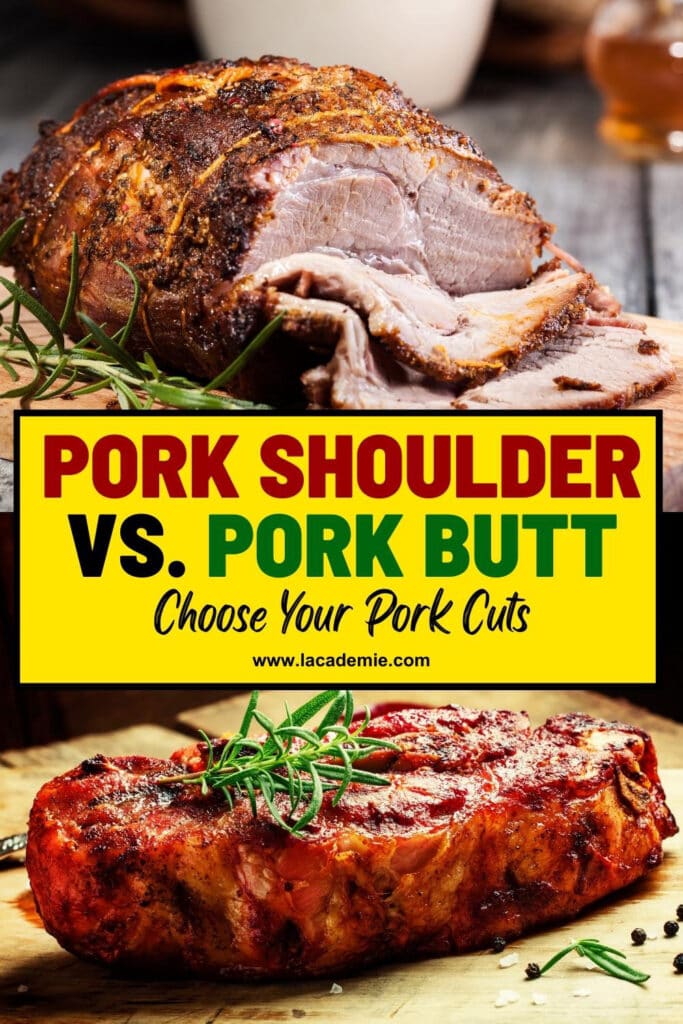
References
- Calorie Slism. 2022. Calories in Pork Shoulder.
- Calorie Slism. 2022. Calories in Pork Shoulder Boston Butt.
- Brewer, M., 2019. Consumer Attitudes Towards Color and Marbling of Fresh Pork – Hogs, Pigs, and Pork.
- fsis.usda.gov. 2022. Food Produce Dating.

